- Center on Health Equity & Access
- Clinical
- Health Care Cost
- Health Care Delivery
- Insurance
- Policy
- Technology
- Value-Based Care
Revised EOM Offers More Favorable Opportunities for Community Practices, Experts Say
Changes to CMS’s Enhanced Oncology Model (EOM) offer community oncology practices more opportunities for compensation and breathing room to try an alternative advanced payment model (APM), despite ongoing requirements to pursue health equity goals, according to experts who appeared on a July 10, 2024, webinar.
Shiela Plasencia | Image: COA
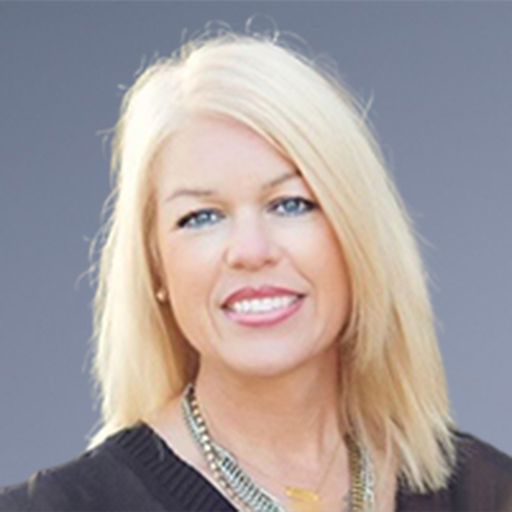
Presented by the Community Oncology Alliance (COA), an advocacy organization for independent practices, the hourlong session featured experts from major practice networks and Avalere Health. Shiela Plasencia, director of practice support for COA, served as moderator.
“The session focuses on aspects of EOM that have generated the most questions,” Plasencia said. “We want to spend some time focusing on those areas, so that we can help make this process of discerning whether the second iteration of the EOM is a fit for you and your practice.”
EOM is a successor to the Oncology Care Model (OCM), an APM that ran for 6 years and ended in June 2022.1 It was not considered a success from a financial standpoint; however, practice leaders who learned to navigate the OCM insist it transformed care delivery and once mastered, it drove substantial savings to Medicare and improved quality of life for patients.2
The EOM retained many features of the OCM. It is built around 6-month periods of care or “episodes,” and practices are reviewed in 6-month performance periods; two have concluded and the third began July 1, 2024. Practices seek to meet or exceed savings targets, and they may be financially rewarded or punished depending on the results. In addition, practices are paid to provide a required set of Monthly Enhanced Oncology Services (MEOS).
After only 44 practices signed on for the EOM in July 2023, CMS revisited the program and increased MEOS from $70 to $110 per patient per month. CMS also told practices they will not owe money until their spending exceeds 100% of a risk-adjusted benchmark starting January 1, 2025; the threshold was previously 98%.3 Especially for practices just starting the EOM, this allows more flexibility to learn the nuances before risking penalties.
To further draw practices into the EOM, the time frames have been adjusted: New applicants can sign up for the EOM starting in July 2024, with the intent of starting in the model in July 2025 (for these practices, applications are due September 19, 2024). The model was scheduled to end in June 2028 but has now been extended to June 2030.
Plasencia highlighted challenges of the EOM: First, the model offers 2 risk adjustment tiers, with the less aggressive tier still requiring practices to report data under the Merit-based Incentive Payment System (MIPS), created in 2015. Practices that took part in OCM had no MIPS reporting. Second, unlike the OCM, all practices must take on risk from the start of the model. Small patient populations can make it hard to optimize workflows. Finally, the EOM requires a new area of data collection under social determinants of health, which Plasencia said demands resources from a practice.
Health Equity Access Plan
Abra Kelson, MSW, LICSW, support services manager for Northwest Medical Specialties, PLLC, chronicled how her practice went back and forth with CMS officials to meet requirements for a health equity access plan. Hers was one of the first practices to go through the process, and there was learning on both sides. Kelson encouraged practices to use the draft submission process, which is an online form, and take feedback from CMS, if possible.
Abra Kelson, MSW, LICSW | Image: Northwest Medical Specialties PLLC
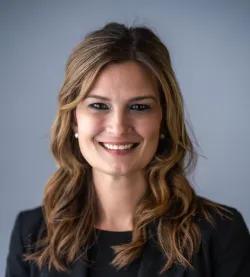
“They wanted us to provide further information about the process for which we would stratify sociodemographic and health-related social needs data,” Kelson said, including zip-code level data. Health equity efforts must be implemented without regard to a person’s individual characteristics. And the practice realized later it should have included existing collaborations already in place. Finally, she said, “We just ended up moving forward with our food access plan,” which reduced reporting burdens.
With a second submission, CMS offered a better picture of what it wanted—including an example of a health equity plan, which featured short-term goals and details of the disparity being addressed. Challenges remain because the practice’s electronic health record has limits on how well it can stratify data that CMS seeks. There’s also a difference of opinion on how the information should be used.
“In terms of the submission, I think the idea of the Health Equity Plan is that it would be a living document—something that you’d be utilizing throughout the work that you’re doing regarding that specific initiative. And with the online form, it doesn’t really allow for that continued use throughout the year. So, we ended up creating another document through Excel where we can track the actions that we’re taking, and the data, the feedback, and [ask], are these initiatives that we’re implementing successful?”
Despite the frustrations, Kelson finds positive aspects from the process. “It’s really encouraged us to reach out into different areas of care that we hadn’t spent as much time in, [and] develop new partnerships,” she said.
Aligning PIN and EOM
Midway through EOM’s first year, CMS approved billing codes for nonclinical patient navigation, or, specifically, Principal Illness Navigation (PIN).4
Although many welcomed CMS’s recognition that these services merited separate reimbursement, experts found the codes’ finer points to be tricky. Still, given that even the updated EOM offers lower MEOS payments than the old OCM, some practices are interested in learning about PIN.
Susan Sabo-Wagner, MSN, RN, OCN, NEA-BC | Image: AON
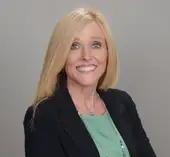
Anne Marie Rainey, MSN, RN, CHC, CPHQ | Image: AON

For this discussion, COA turned to Susan Sabo-Wagner, MSN, RN, OCN, NEA-BC, vice president of clinical navigation, and Anne Marie Rainey, MSN, RN, CHC, CPHQ, director of value-based care, both from the American Oncology Network. Sabo-Wagner explained how AON is organized: The practices in the network operate under a single tax ID; thus, this carries to the EOM, which means that when AON sites were listed in EOM, they appeared as single practice, which understated the network’s geographic diversity and the number of doctors and patients involved.5
“We have around a little over 2400 patients in our entire AON network that are enrolled in EOM, which means that we have about 10% of the entire EOM population,” Sabo-Wagner said. Value-based contracts and quality programs are Rainey’s responsibility, and for EOM, the network has partnership with Thyme Care to manage care coordination across the patient population.
Health equity is a priority for AON, Rainey said, and the network views the new PIN codes as an “opportunity” to view navigation through the health equity lens. “We’re looking to offer this service to any patients who may qualify. So obviously, there are some billing hurdles there as far as insurance type,” she said. Rainey reviewed the different PIN codes and applicable services, explaining how AON is setting up a framework to track and eventually bill for these services.
How does this tie into the EOM? “When we’re thinking about social determinants of health screening, and we’re thinking about addressing those health-related social needs (HRSNs), [much] of this must be driven by a clinician,” Rainey said. “For these services to be billable, because we know that revenue is important, we need the provider involvement.” AON is putting in the time to create the framework for providers to make the recommendation and ancillary staff to take charge from there.Next, Sabo-Wagner explained AON’s relationship with BroadReach,6 which has a cloud-based population health management platform called Vantage Health that will provide best practices for screening for and addressing HRSNs and, later, actionable insights, “with and without PIN services.”
“They do real-time reporting and performance management. And they allow team collaboration and monitoring of the patient journey when connecting with needed resources,” Sabo-Wagner said. The platform can integrate third-party information such as census data—which might address the CMS mandate for zip-code analyses, which can “really paint a picture about what patients are facing demographically prior to even coming into your office.”
There’s also the ability to integrate with other billing codes that oncology offices are now using, such as Principal Care Management. Implementing systems to track, report, and bill concurrently for multiple items is key, Rainey said.
“The best part about these PIN services is that you can build concurrently with those MEOS payments,” she said. “For the practice, of course, you have to think about the process at the end of each performance period… If you’re thinking, I don’t know that my practice is going to head that way, the good news is that this is an area that you and your group can work toward, to really implement, to think about health equity and addressing health-related social needs for your patient population, in conjunction with other care coordination services.”
In many cases, she said, these are services the practices are already providing—it’s just a matter of creating the documentation.
Considerations for Taking on Risk
Next came the most challenging area of the program: how practices can decide if it makes sense for them to take on risk as the EOM requires, and if so, which risk level they should select. Risk arrangement 1 offers practices less exposure but it is not considered an APM and thus practices must still comply with MIPS reporting alongside EOM. If practices can gain comfort working the EOM model to move into risk arrangement 2—along with other requirements—they could leave MIPS reporting behind.
Puneeth Indurlal, MD, MS, MBBS | Image: The US Oncology Network
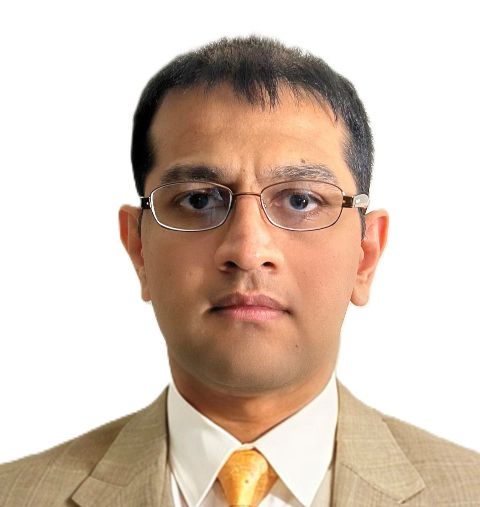
First, Puneeth Indurlal, MD, MS, MBBS, senior director for care transformation and analytics, The US Oncology Network, explained that most oncology practices have some exposure to value-based care transformation. The key is to look at the data, which practices in The US Oncology Network did before making decisions a year ago. Data analyses were prepared for 23 practices, and 12 opted in for EOM, representing about 50% of the physicians taking part in the model.
Indurlal showed a color-coded schematic representing how the 2 risk arrangements worked in different practices and how the risk profiles changed under the revisions to EOM announced in May. In both cases, the models pivot on benchmark prices, and practices strive to achieve savings pegged to those prices.
“The important thing to note here is that the newer risk arrangements do have slightly broader neutral zones, reducing the risk for those practices that were hovering around that benchmark price, which is the comparison point that you will be held accountable to,” Indurlal said. He shared a schematic of a hypothetical practice that applied for and received data back from the CMS Innovation Center to evaluate its options. “We let data drive the decision process on which risk arrangement to select,” Indurlal said. The simulation showed the probability of various outcomes in the model, and created a visual representation of the distributions.
“For this hypothetical practice, we were able to simulate based on the data that the practice in risk arrangement 1 would have had a 55% probability of remaining in that neutral zone, 25% probability of having a performance-based payment, and 14% or more probability of having a recoupment within this model,” he said.
The analysis not only drives practice decisions, he said; it also helps practices better understand their areas of risk tolerance, tweak areas of weakness, and develop interventions for significant change.
Alti Rahman, MHA, MBA | Image: AON
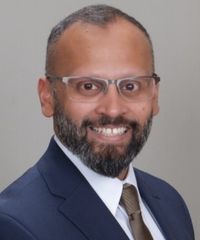
For AON practices, Alti Rahman, MHA, MBA, chief strategy and innovation officer, there was a realization that practices are also taking part in a very large multistate Anthem program with many similarities to the old OCM, and some to the current EOM.
“If we look at value-based care models, it’s really a function of cost—whether it’s to commercial Medicare, or Medicare Advantage plans. And part of where we wanted to get into with our experience with EOM and our experience with Anthem was, ‘What does value mean to a consumer as well?’” he said.
“So, we feel like it’s important to go down this very complex exercise to start from the ground, go into the details, go through the challenges. That way we can boil this ocean down into simpler understandings of what is quality and value and value to human oncology,” Rahman said.
The partnership with Thyme Care, for example, began in risk arrangement 1; on both sides, the teams needed an understanding of how getting the data back from CMS Innovation Center would be delayed. It was clear the trend factor in the model would play a key role, that is, changing costs among non-oncology physician group practices. And this would tie directly to hitting the benchmark, holding down costs, and the potential for recoupment. “But we don’t have a line of sight into that,” Rahman said.
But the pieces AON did know allowed AON to work with Thyme Care to gather claims data and create a target range, “where we think we could end up between RA1 and RA2.”
Working with Thyme Care, the partnership has been able to “work backwards” to estimate performance calculations, given practices insights into where interventions should happen. “We’re able to look at how we can look at our interventions that were happening internally, and then how we can track against the model itself,” said Rahman. (Thyme Care President and Chief Medical Officer Bobby Green, MD, MSCE, confirmed in a separate interview with Evidence-Based Oncology that this process now allows practices to track in more “real-time” how they are doing in the EOM.)
Because of the way AON is organized, weekly engagement is essential, Rahman said. “We’re able to coordinate communication between central teams and regional teams,” he said. The structure demands close tracking of progress and “focused conversations,” all set up around a single technology infrastructure.
Beyond weekly multidisciplinary team contact, the second essential is eligibility monitoring, and the third essential is that HRSN monitoring is required—but some of the essential data needed to do this well is not available from CMS, including pharmacy data. As AON moves into the more aggressive RA2 range—and more data become available, Rahman said, “We’re going to be able to see how closely we can model this.”
“We’re hoping that as we go down this more aggressive path that we continue to refine our model,” Rahman said. “As we look at refining the model, it really helps us to understand how we create similar talking points with our other payer partners as well, because as I mentioned, our Anthem program follows very similar principles.”
References
1. Enhancing Oncology Model. CMS. Accessed June 4, 2024. https://www.cms.gov/priorities/innovation/innovation-models/enhancing-oncology-model
2. Mullangi S, Parikh RB, Schleicher SM. Next-generation alternative payment models in oncology—will precision preclude participation? JAMA Oncol. 2023;9(4):457-458. doi:10.1001/jamaoncol.2022.7179
3. Caffrey M. CMS reopens EOM with payment boost, extends model to 2030. Am J Manag Care. 2024;30(Spec 7):SP499.
4. 5. Health equity services in the 2024 Physician Fee Schedule Final Rule. Medical Learning Network. January 2024. Accessed July 23, 2024. https://www.cms.gov/files/document/mln9201074-health-equity-services-2024-physician-fee-schedule-final-rule.pdf-0
5. Caffrey M. Final EOM list favors larger practices, AON strategy helps smaller groups. Am J Manag Care. 2023;29(Spec 7):SP633-SP635. https://doi.org/10.37765/ajmc.2023.89421
6. BroadReach Group. The future of work in healthcare. Accessed July 23, 2024. https://broadreachcorporation.com/vantage/
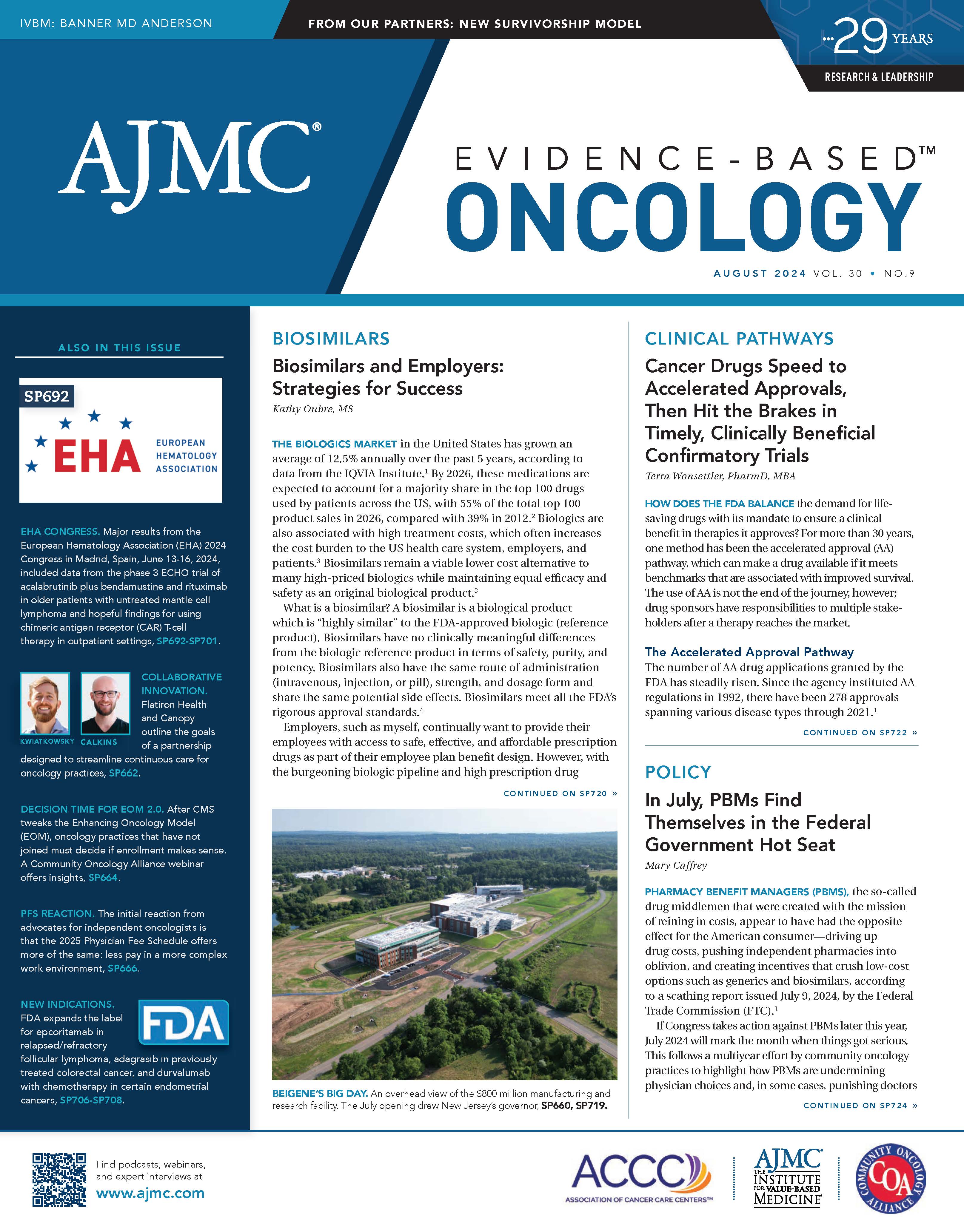
Despite Record ACA Enrollment, Report Reveals Underinsured Americans are in Crisis
November 21st 2024Despite significant progress in expanding health insurance coverage since the Affordable Care Act (ACA) was enacted, millions of Americans still face critical gaps in access and affordability to health care.
Read More
Building Trust, Breaking Barriers: Health Care Leaders Tackle Primary Care Challenges
August 8th 2024On this episode of Managed Care Cast, we're talking with the chief medical officers of CVS Health and Aetna, as well as CVS Health's chief health equity officer, about primary and preventive care engagement, the impact of telehealth, and the role of trust in patient-provider relationships.
Listen
Bridging the Vaccination Gap: Insights on Global Immunization Challenges
July 30th 2024On this episode of Managed Care Cast, we speak with Jeffery A. Goad, PharmD, MPH, 2024-2025 president of the National Foundation for Infectious Diseases, on the recent report from the World Health Organization and UNICEF on public immunization rates, with national and global health implications.
Listen
Support and Skepticism Emerge as Reactions to Robert F. Kennedy Jr’s HHS Nomination
November 15th 2024In the hours after President-elect Donald J. Trump tapped Robert F. Kennedy Jr to lead HHS, reactions came swiftly to the controversial pick who would have a large influence to shake up public health.
Read More
